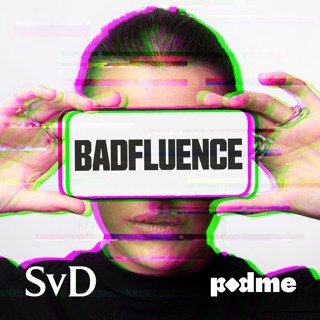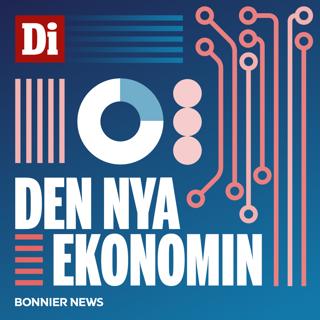
Navigating the Evolving Landscape of Dividends, Meme Stocks, and Crypto Trends
In the dynamic landscape of financial markets, distinct trends that range from the allure of dividend-yielding stocks to the surge of meme-driven cryptocurrency innovations are shaping investor behavior and market reactions.Firstly, the recent 50 basis points rate cut by the Federal Reserve has notably increased the attractiveness of high dividend yield stocks. Income investors, in particular, are finding significant opportunities in these assets as they offer a steadier revenue stream against a backdrop of economic volatility. Stocks with strong dividend yields essentially provide investors with regular payouts which can be particularly appealing in times when the market is unstable. For instance, a Unternehmen like Nestlé, known for its consistent dividend payments, recently experienced a new 52-week low, trading down from its previous close. This scenario may represent a buying opportunity for those looking to capitalize on robust companies with lower stock prices that still yield substantial dividends.On a different note, the realm of cryptocurrencies and stocks is also experiencing a burst of cultural phenomena, predominantly influenced by memes. ‘Meme stocks’ like Chewy Inc. have seen unusual market behaviors that underscore the growing influence of social media and individual investors in trading. An example of this emerged when Chewy's stock registered its longest winning streak on record following a cryptic post by Keith Gill, better known as Roaring Kitty, who gained fame with his investments in GameStop. Such events highlight how trader sentiment and online discussions can drastically sway stock prices, irrespective of traditional financial indicators.Further merging the worlds of digital currency and cultural trends, the cryptocurrency market has witnessed the advent of DOGEGOV, also known as the Department of Government Efficiency. This crypto meme has rapidly taken over the scene, reflecting an increasing trend where digital assets are intertwined with humorous or viral internet content. Cryptocurrencies like DOGEGOV demonstrate how sentiment and public perception, often driven by social media, can significantly impact value in this digital age. Investors and market spectators are observing an interesting era where traditional investment strategies such as focusing on dividend yields coexist with modern speculative phenomena like meme stocks and cryptocurrencies influenced by cultural currents. This blend of investment logic marks a transformation in both how assets are valued and how markets might behave in future scenarios.Understanding these trends is crucial for both seasoned investors seeking to diversify portfolios and new traders trying to navigate the complexities of stock and cryptocurrency markets influenced by both traditional economic factors and the burgeoning role of social media and cultural influence.This content was created in partnership and with the help of Artificial Intelligence AI
21 Sep 20243min

Navigating the Evolving Investment Landscape: Single-Stock ETFs, Tupperware Bankruptcy, and Ark Invest's Strategic Moves
The landscape of investment is continually evolving, and recent trends indicate a significant shift toward single-stock Exchange Traded Funds (ETFs), particularly spotlighting high-performance companies like Nvidia and Tesla. These ETFs focus solely on one company’s stock, providing investors with a new approach to investing in high-growth sectors like technology and electric vehicles. Companies like Webull are facilitating access to these specialized ETFs, broadening the investment options available to retail investors.In another intriguing turn of events, Tupperware, a household name for decades thanks to its colorful range of storage solutions, has filed for bankruptcy. A battle has ensued between its lenders over the future of the company’s assets, with some pushing for a simple foreclosure over bankruptcy. This marks a significant downturn for the company which has seen a decrease in relevance in the modern market, overwhelmed by changes in consumer behavior and increasing competition.Meanwhile, Trump Media's stock, traded as DJT, is facing a pivotal moment with what's being termed as the "great unlocking" on September 20, where a large number of previously unsalable shares are set to become available for trading. This event is anticipated to potentially lead to a sell-off due to the increase in available shares, testing the stock's market resilience.In the realm of investment management, Cathie Wood's Ark Invest is making noticeable moves by continuously decreasing its holdings in companies like Robinhood and Palantir. As interest rates observe a decline, these strategic adjustments in Ark’s portfolio signal a reaction to the macroeconomic changes affecting tech and finance sectors, showcasing Ark's responsive investment approach based on market conditions.These narratives illuminate the dynamics of today’s financial markets—from innovative investment products to shifts in traditional business models and investment strategies adapting to economic climates. As these trends grow, they may soon expand into more markets globally, including Australia, hinting at a broader acceptance and integration of such novel financial mechanisms.This content was created in partnership and with the help of Artificial Intelligence AI
19 Sep 20242min

"Iconic Tupperware Brand Succumbs to Financial Strains, Files for Chapter 11 Bankruptcy"
Tupperware Brands Corporation, once a staple in households globally and even briefly heralded as a meme stock, has succumbed to financial strains, filing for Chapter 11 bankruptcy. This move marks a significant downturn for the company that revolutionized kitchen storage with its plastic containers and direct-selling approach.Initially famed for its innovative design and social selling through Tupperware parties, the brand became synonymous with quality and reliability. However, despite its strong brand recognition and a history that stretches back to 1946, Tupperware has struggled in recent years with challenges ranging from increased competition to changing consumer behaviors.The zenith of its crisis became evident when the company, along with some of its subsidiaries, declared its need for bankruptcy protection. This legal maneuver is intended to restructure the company financially by allowing it to keep operating while it works out its debts and reorganizes its business structure. Such filings are usually aimed at reducing a company's debt and reshaping it to become more profitable.In the announcement, Tupperware expressed its intention to continue its operations, emphasizing that it would persist in delivering innovative products through its established network of sales consultants and retail partners. This commitment underscores the company's focus on maintaining its market presence and customer trust despite the financial turmoil.The fall of Tupperware is emblematic of what some analysts call the 'iconic brand fallacy,' where the historical significance and past market dominance of a brand do not necessarily insulate it from future business disruptions. This concept highlights the necessity for even established companies to continuously innovate and adapt to shifting market dynamics.The bankruptcy of Tupperware also illustrates a broader trend where former market leaders must recalibrate their strategies to thrive in an evolving landscape, reflecting shifts in consumer preferences and technological advancements. As Tupperware navigates through these proceedings, the business world watches closely, learning from its efforts to redefine and stabilize its iconic brand in a rapidly changing market environment.This content was created in partnership and with the help of Artificial Intelligence AI
18 Sep 20242min

Cathie Wood's Bold Moves, Paro Airport's Perilous Landings, and Everyday Investors' Emotional Decisions: A Snapshot of Dynamic Market Shifts
Cathie Wood, the influential CEO of Ark Invest, has been actively reshaping her investment portfolio, particularly involving the trading of stocks from companies like Robinhood Markets Inc and Palantir Technologies Inc. Robinhood, a popular trading platform, and Palantir, a big data analytics company, have both experienced fluctuations that have attracted significant attention from investors. These moves by Ark Invest highlight Wood's dynamic investment strategy, often marked by bold decisions that either uphold her vision of disruptive innovation or react tactically to market changes.Over in the aviation world, the Paro Airport in Bhutan offers one of the most challenging landing experiences worldwide, with only about 50 pilots certified to navigate its tricky approach. The descent into Paro Airport involves navigating through narrow valleys and making a sharp turn near the runway to manage the surrounding steep mountains. This unique aerial maneuver showcases the high level of skill and precision required to safely land at what is considered one of the world's most dangerous airports.On a lighter note, everyday investors like John, mentioned by Zacks Investment Research, often find themselves in relatable financial predicaments. Taking a screenshot of an investment’s peak value instead of selling it hints at the emotional and sometimes whimsical decisions individuals make in the trading world, drawing a contrast against more calculated, professional strategies.Meanwhile, famed investor Michael Burry, renowned for his prediction of the 2007 housing market crash (featured in "The Big Short"), has reportedly concentrated a significant portion of his investments in just three stocks. This investment choice underscores his continued confidence in these selected companies and shows his strategic approach in navigating through current market uncertainties.Lastly, Tupperware Brands, once a household name for its food storage products, is reportedly facing financial distress. According to Bloomberg, the company may soon file for bankruptcy. This development highlights the challenges faced by historical brands struggling to adapt in an ever-evolving consumer market, which has seen a significant shift towards digital shopping and sustainability-focused products.Each of these narratives paints a broader picture of the dynamic shifts occurring across different sectors, including finance, aviation, and consumer goods—each indicative of broader trends and transformations within the global market.This content was created in partnership and with the help of Artificial Intelligence AI
17 Sep 20242min

Meme Stocks Disrupt Traditional Investing: Opportunities and Challenges in the New Market Landscape
In recent years, meme stocks have captivated the imagination of retail investors, leading to unpredictable market behavior and providing unique investment opportunities. These stocks, often influenced by social media and retail investor forums like Reddit, can experience rapid price increases based on viral trends rather than traditional financial metrics. This phenomenon was prominently highlighted during the GameStop rally of early 2021, which underscored the potential power of collective retail investing.Recently, JM Financial identified a small cap defense stock with an anticipated 21% upside, signaling growing investor interest in sectors traditionally dominated by more stable, less volatile stocks. This indicates that the meme stock phenomenon may be diversifying into new sectors, offering opportunities beyond consumer tech and entertainment.Another example is the rise of Slothana on the Solana blockchain, which managed to raise $2.1 million in just three days. Slothana and other Solana meme coins are gaining traction within the cryptocurrency community, reflecting demographics that prefer high-risk, high-reward investments aligned with digital trends and the growing popularity of decentralized finance.Additionally, Palantir Technologies, despite not being a traditional meme stock, has developed a strong interest among amateur investors. Its inclusion in the S&P highlights the crossover appeal of certain tech-oriented companies that attract both traditional investment and speculative interest due to their innovative business models and futuristic technologies.On a broader scale, market segments such as the Nifty Bank index have shown positivity, advancing by 1.45% recently, indicating a general market optimism. Conversely, FMCG stocks have seen a downturn despite the broader market rising, illustrating the complex and often sector-specific nature of stock market dynamics.Investor strategies continue to evolve, with an observed pullback from short selling, a practice that became particularly risky during the meme stock frenzy. This demonstrates a shift in investor sentiment and strategy in response to market phenomena triggered by social media-driven investing.As this trend continues, companies like Coca-Cola remain steady in their appeal, particularly among investors like Warren Buffett who favor strong, dividend-yielding stocks. This juxtaposition of investment approaches—from high-volatility meme stocks to reliable dividends—highlights the diverse tactics available to investors in today’s complex financial landscape.Understanding these trends is crucial for both individual and institutional investors navigating an increasingly unpredictable market influenced by social media, speculative trading, and digital currencies, as each factor plays a significant role in shaping investment decisions and potential returns.This content was created in partnership and with the help of Artificial Intelligence AI
16 Sep 20243min

Navigating the Surge of Meme Stocks and Cryptocurrencies: Balancing Opportunity and Risk
The landscape of investing has transformed dramatically with the emergence of "meme stocks" and meme-oriented cryptocurrencies, events marked by widespread amateur speculative activity and significant influence from social media platforms. This phenomenon caught the public's eye particularly during the rise of companies like GameStop and AMC in early 2021, fueled by discussions on forums such as Reddit's r/WallStreetBets. Taking a closer look at recent developments, Nvidia CEO Jensen Huang's sale of $104 million worth of shares has raised eyebrows and sparked discussions regarding the future prospects of Nvidia's stock price (NVDA). While such transactions by executives can be routine, based on predefined trading plans known as 10b5-1 plans, they often lead to speculation about the internal outlook of the company and its stock performance expectations.Meanwhile, the curious case of Palantir's CEO, Alex Karp, highlights how company leadership can capture the public’s imagination and potentially sway investor sentiment. Karp, known for his idiosyncratic style — such as running through woods with neon-pink ski poles — represents a break from traditional corporate leadership imagery. His unique approach could be influencing how investors and the public perceive Palantir, intertwining CEO persona with company image.In the realm of cryptocurrencies, meme coins like Dogecoin, which began as internet jokes, are no longer the only players. Newer entrants like Dogwifhat, Floki, and Pepe have surged into the spotlight, riding the broader meme culture wave. During rallies, the values of these currencies can skyrocket, often driven by speculative trading and social media hype rather than underlying fundamentals. The emergence of tokens such as MEMEBET further emphasizes the gamified nature of this investment class.Taking a broader perspective, even popular culture elements like the TV show "Henry Danger" are not immune to becoming entangled with meme culture, being transformed into viral memes that engage audiences in ways that traditional media seldom does.Moreover, the evolution of meme investing has reached cryptocurrencies associated with more established blockchains like Solana (SOL) and Tron (TRX). Once perhaps considered alongside the likes of Dogecoin for their meme potential, these currencies have begun to be recognized for their technological and functional attributes.As investing increasingly intersects with real-time trends and digital culture, the lines between solid investment strategies and following viral trends continue to blur. Both individual investors and institutional players must navigate this new reality carefully, balancing the allure of quick gains with the potential risks of volatility and bubbles inherent in such movements. The stakeholder’s challenge is to discern the longevity and sustainability of such investments amidst rapid fluctuations driven by social media and community hype.This content was created in partnership and with the help of Artificial Intelligence AI
15 Sep 20243min

Navigating the Meme Stock Phenomenon: Opportunities and Risks in the Social Media-Driven Market
Meme stocks are a phenomenon that has captivated the financial market, often characterized by rapid price increases driven largely by social media hype rather than traditional financial metrics. This trend has seen relatively unknown or struggling companies witnessing massive surges in stock price due to attention from retail investors, particularly those active on platforms like Reddit.An illustrative example of the meme stock surge can be seen with Petco Health & Wellness, which experienced significant price increases reportedly influenced by popular trader Roaring Kitty. Roaring Kitty, who gained fame from the GameStop stock rally in early 2021, has shown the power social media figures can have in affecting stock prices. However, the question remains whether such stocks are stable investments or merely speculative bubbles.In Indonesia, Sumber Alfaria Trijaya Tbk Pt, known as Alfamart, has also ridden the waves of meme stock mania. The convenience store operator became a notable name in the meme stock list, generating significant interest among investors drawn by social media buzz rather than the company’s financial health.The case of Nvidia offers a contrasting perspective. Known for its robust fundamentals in the tech industry, Nvidia experienced what many called a “correction” after an intense period of hype around its stock. This instance reflects the broader market's oscillation between speculation and traditional investment reasoning, demonstrating the transient nature of some stock rallies.Similarly, GameStop, a video game retailer, capitalized on its status as a meme stock celebrity by raising approximately $2.1 billion after its stock price surged. This move was strategic, leveraging high stock prices to strengthen the company’s financial position.Outside conventional business sectors, Trump Media became another example of stocks influenced more by celebrity endorsements and media statements than by corporate performance. The stock soared after former President Donald Trump declared he would not sell his shares, showing how individual statements can trigger large movements in these volatile stocks.Amid these developments, the trend of meme stocks marks a shift in market dynamics, where community-driven investment decisions can outscale traditional financial analysis. However, this leads many to caution about the sustainability and real-value assessment of such investments, suggesting a potential bubble formation in cases where the price increases are not supported by fundamental growth or profitability.In this context, meme stocks exemplify a new era of trading, dominated by social media influence and retail investors. While they offer opportunities for substantial gains, they also pose high risks, potentially leading to abrupt market corrections. Investors are thus advised to approach these stocks with a clear understanding of the underlying volatility and speculative nature inherent in such investments.This content was created in partnership and with the help of Artificial Intelligence AI
14 Sep 20243min

Harnessing the Meme Effect: Navigating the Volatile World of Meme Stocks and Coins
In recent years, the phenomenon of "meme stocks" and "meme coins" has captured the attention of investors and financial markets around the world. Originating from online communities and social media platforms, these financial assets often see their value influenced heavily by retail investors and viral trends, rather than traditional financial metrics or underlying business performances.A prominent example of meme stocks is GameStop, which saw its stock price skyrocket in early 2021 due to a coordinated effort by retail investors from online communities like Reddit’s WallStreetBets. This movement was not just a market anomaly, but a rebellion against institutional investors who had heavily shorted GameStop stock, expecting it to decline. The sudden surge in GameStop’s stock price resulted in massive losses for those short sellers and highlighted the growing influence of retail investors in the stock market.Parallel to the rise of meme stocks, the concept of meme coins has also gained traction, particularly with cryptocurrencies created as jokes or memes that unexpectedly soar in value. An example of this is a meme coin launched on the TRON blockchain, capturing the fascination of cryptocurrency enthusiasts looking for the next big surge in value, driven by community support and viral social media campaigns.The phenomenon extends beyond mere financial implications; it has permeated pop culture as well. In Springfield, Ohio, for instance, a claim related to Donald Trump and a debunked rumor about pet-eating sparked a flurry of memes and parodies, connecting popular culture with local and political narratives.Investors, meanwhile, are advised to approach meme stocks and coins with caution. The volatile nature of these assets means they can plummet as quickly as they rise, often leaving latecomers with significant losses. Financial advisors often stress the importance of understanding the high-risk nature of investing in these viral assets and suggest maintaining a diversified portfolio to mitigate potential risks.The resurgence of meme stocks has stirred concerned discussions among market analysts and investors. The fear is that the speculative nature of these investments might lead to market instability or distract from more fundamentally solid investment opportunities.In essence, while the meme stock and coin movement has democratized investing to some extent, empowering smaller investors to influence the market, it also brings with it a level of unpredictability and risk that cannot be ignored. As this trend continues, the financial market must adapt to the increasing influence of social media and the changing dynamics of investor behavior.This content was created in partnership and with the help of Artificial Intelligence AI
13 Sep 20242min





















